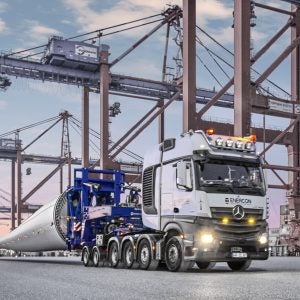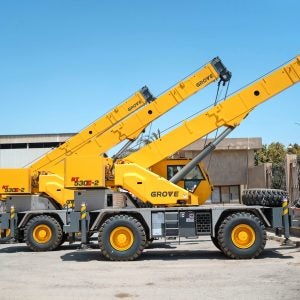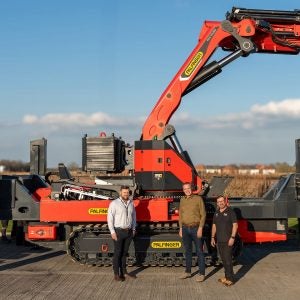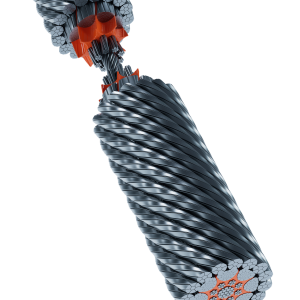At the lower part of the crane the lattice sections are assembled parallel to each other; at the top, the double boom is joined together to form a single boom. The parallel lattice sections are joined near the slewing platform with the “lower P-adapter” and bolted to the crane. At the top of the crane, the double boom is joined with the “upper P-adapter” and is extended with a simple lattice system.
Liebherr says, the power boom not only improves stability in the direction of the load, but also to the side, which results in ‘enormous’ increases in lifting capacity with long boom systems. A serial luffing fly jib can be attached, with its lifting capacity also being increased considerably by the increase in the torsional moment of the power boom.
In general, Liebherr says, only standard intermediate sections are used with the power boom. The advantages are that only the lower and upper P-adapters are needed additionally and that the crane operator has a crane with lifting capacities in the next higher crane category.
The power boom is designed so that it can be offered as an option and can also be retrofitted to cranes that have already been delivered. The P-adapters can be used for several cranes of the same type. The slewing platform, derrick boom and luffing fly jib remain the same. The base section is designed so that a single or parallel boom can be attached to the crane’s slewing platform.
The power boom was first designed for the 3,000-tonne LR 13000 crawler crane. Liebherr has since developed it for the LR 11350, on which it is currently assembled and being tested. Liebherr says the P-boom system is ideally suited to customers looking to extend the wind turbine capacity of their 600t–750t crawler cranes.






